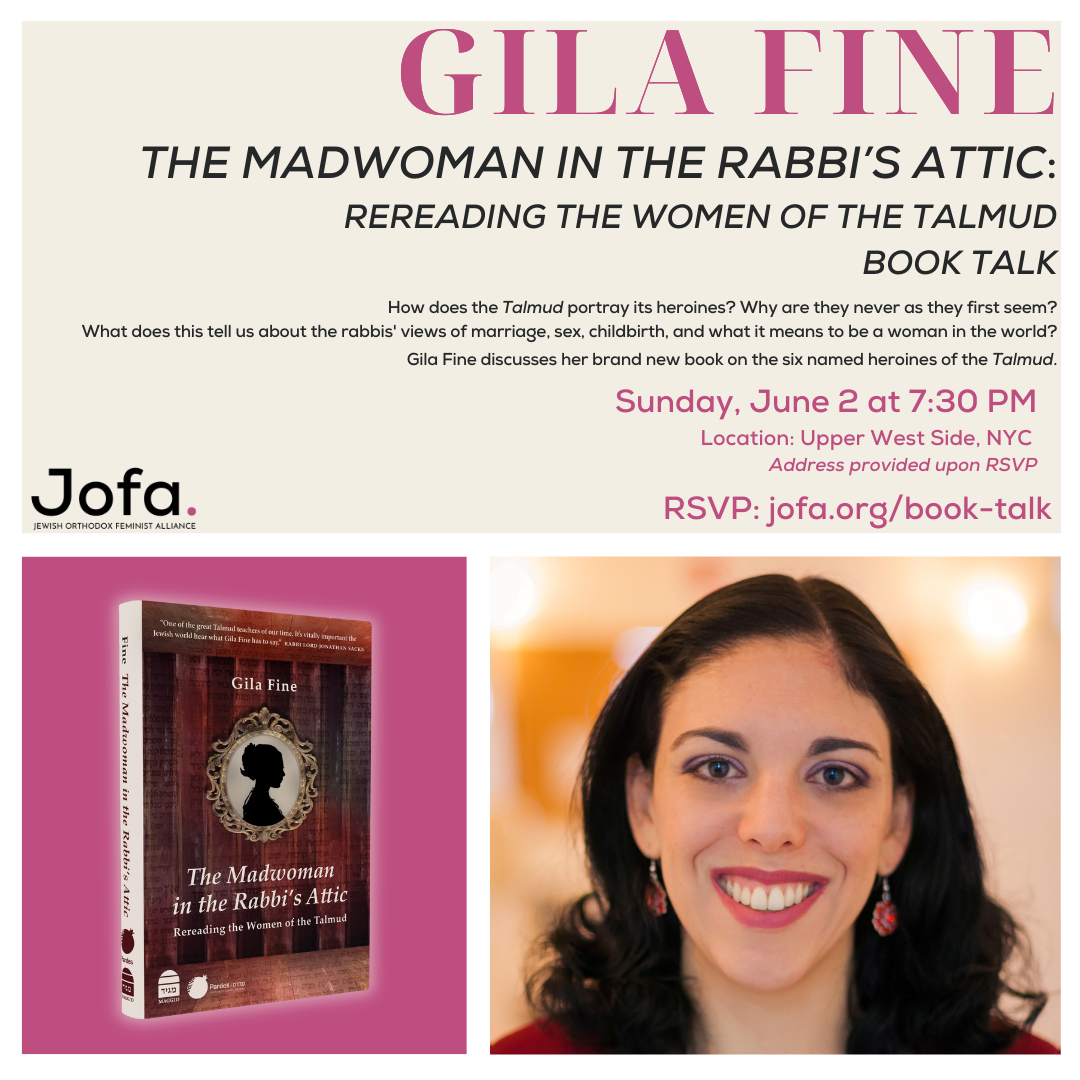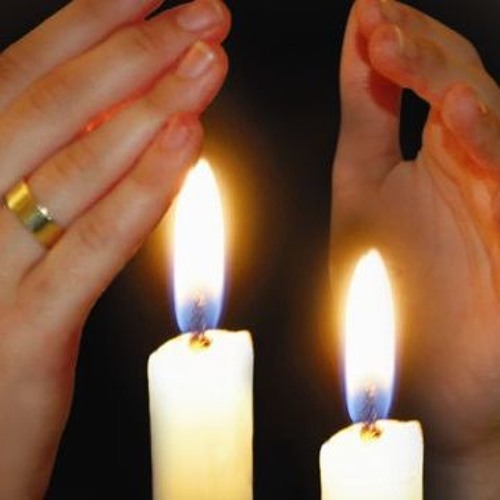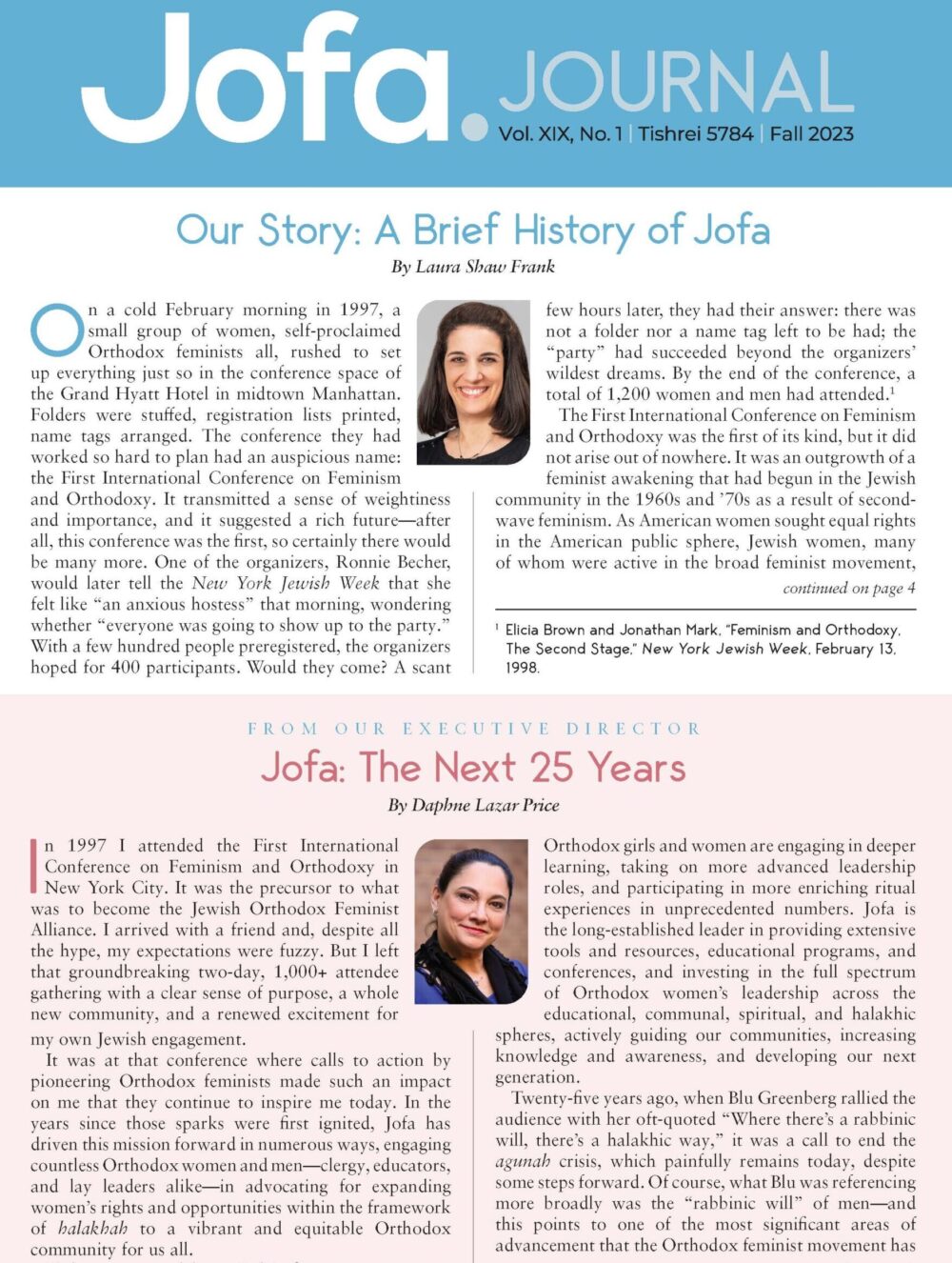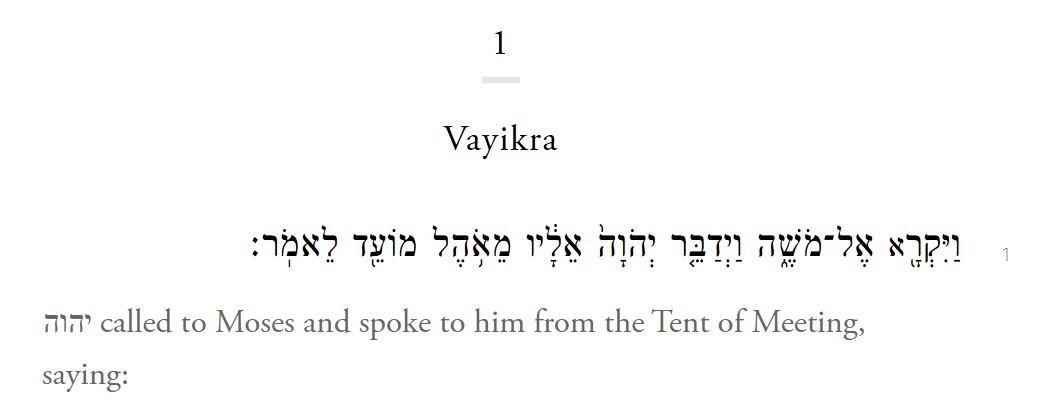By Eliezer Hirsch
The topic of the synagogue mehitzah has generated impassioned discussion spanning more than a century. Widely debated in the United States throughout the twentieth century, mehitzah (and even separate seating) was not always the standard for Orthodox synagogues. In the 1950s, a significant number of synagogues that identified as Orthodox did not use a mehitzah. As American Orthodox Judaism developed, however, the mehitzah became a defining feature of its synagogues.
Recently, the public conversation has subsided, shifting toward more hot-button issues such as advanced Torah study for women and women in leadership positions, leaving mehitzah to the annals of previous generations. Some Orthodox leaders refer to the topic as “yesterday’s news.” On the other hand, Rabba Sara Hurwitz, dean of Yeshivat Maharat, highlighted mehitzah as “one of the critical issues currently facing the Jewish community,” particularly in light of its impact on Orthodox women’s level of engagement in Jewish life. Other prominent female leaders, including Maharats Anat Sharbat and Rachel Kohl Finegold, have expressed similar sentiments, as have members of the Orthodox synagogue of which I have been rabbi for over a decade. To understand why mehitzah arouses strong responses and to see how we arrived at this juncture, I will trace the halakhic origins of the synagogue mehitzah, discuss some of the challenges it poses today, and conclude with possible solutions.
Source of the Synagogue Mehitzah
The mehitzah may be a staple of Orthodox synagogues, but its source in Jewish law is somewhat murky. The Shulhan Arukh does not include a single reference to a synagogue mehitzah. Rabbi Eliezer Waldenberg explained this anomaly by noting that up to and including that time, the complete synagogue mehitzah was ubiquitous, so the halakha was taken for granted and went unmentioned.
The first halakhic authority to document mehitzah as an obligation sourced in the Talmud was most likely Rabbi Moshe Schreiber, the Hatam Sofer, in his responsa. Like most subsequent halakhic authorities, he traced the requirement for mehitzah to Tractate Sukkah 51b–52a. In that passage, the Talmud introduces the Tikkun Gadol (Great Correction) of adding a women’s balcony to the Jerusalem Temple during the Simhat Beit Hashoeivah celebration. Technically, this construction should have been considered an illegal modification of the Temple, but it was mandated to prevent frivolity in the Temple, particularly during a time as joyous as the Simhat Beit Hashoeivah. According to the Rambam, the purpose of the Temple balcony was to help prevent men from looking into the ezrat nashim, the women’s section, which in itself could lead to frivolity.
This line of reasoning formed the basis for the prevailing practice of mehitzah in most European cities, and the logic behind the commanding and influential “p’sak din (legal ruling) of the 70 rabbis.” Released in 1866, this p’sak din was authored primarily by a student of the Hatam Sofer, Rabbi Meir Ash of Ungvar, Hungary, and his student, the author of the Kitzur Shulkhan Arukh, Rabbi Shlomo Ganzfried. This ruling amounted to a public halakhic proclamation (kol korei) issued in response to modifications of mehitzot in certain European synagogues. In a strongly worded statement, the halakhic decision prohibited changes to the traditional synagogue mehitzah, and stipulated that all synagogue mehitzot must be constructed to prevent men completely from looking into the ezrat nashim. Based on this legal precedent, many prominent authorities, including Rabbi Eliezer Waldenberg, Rabbi Aharon Kotler, and Rabbi Yoel Teitelbaum (Satmar Rebbe), concluded that a synagogue mehitzah must be high and opaque enough to prevent men from seeing into the ezrat nashim during prayer services.
A Different Perspective
In contrast to the stricter halakhic requirements of the Hatam Sofer, Rabbi Moshe Feinstein offered a more liberal approach to mehitzah. In a series of responsa, largely based on the Rambam’s halakhically authoritative Mishneh Torah, R. Feinstein argued that the purpose of the synagogue mehitzah was to hinder frivolous behavior, which at times could lead to improper sexual activity. According to this reasoning, the mehitzah must prevent physical interaction between men and women, but not necessarily restrict them from seeing one another. R. Feinstein preferred a mehitzah in the form of a balcony, which completely separates the two groups from one another and is also most comparable with the original Temple mehitzah as described in the Talmud. Otherwise, a solid partition high enough to inhibit intermingling is necessary, making it critical that a floor-level mehitzah reach the height of an average person’s shoulders. Based on the opinions of Rashi, Tosefot, and Rashbam, R. Feinstein estimated that the minimum height requirement for a floor-level mehitzah is approximately 17 to 18 tefahim, which he calculated to be in the range of 58 to 66 inches, depending on various factors.
An even more lenient approach to mehitzah was taken by Rabbi Joseph B. Soloveitchik, Rabbi Aaron Soloveitchik, and Rabbi Yosef Eliyahu Henkin, who ruled that if necessary, it would suffice for a synagogue mehitzah to follow the general guidelines of halakhic partitions that serve as a separation barrier in other areas of Jewish law. These consistently require a height of at least 10 tefahim, or 30 to 40 inches.
Other Practical Considerations
The Talmud is silent as to whether a mehitzah is necessary outside the Temple and is inconclusive about whether a synagogue mehitzah would be a Torah-based, rabbinic, or custom-derived obligation. There is much debate among the authorities regarding these details, but the clear consensus, as well as current practice in Orthodox synagogues, mandates separate seating with a mehitzah in the synagogue during the prayer service.
Although the halakhic obligation of mehitzah is now universally accepted among Orthodox congregations, it is not universally beloved by halakhically committed Orthodox women. A balcony or an opaque mehitzah may meet specific halakhic requirements, yet it can also greatly diminish the synagogue experience for women. This point is sometimes overlooked amid the fervor for creating the most halakhically credible mehitzah. Rabbi Yechiel Yaakov Weinberg, author of Responsa S’ridei Eish, determined that because our culture has changed dramatically since nineteenth-century Europe, it is necessary to relax mehitzah regulations to create a comfortable synagogue environment for women. He further declared it prohibited to remain unresponsive to women’s concerns, as displeasure with mehitzah will lead some women to disconnect from Judaism. This consideration of potential detachment is far more critical than the mehitzah itself, whose basis in Jewish law, he said, is comparatively subtle.
My own experience as a rabbi, along with feedback from female Orthodox leaders and congregants, confirms the assertion of the S’ridei Eish that many women today find their connection to Judaism through the synagogue. An unpleasant synagogue experience may discourage attendance, thereby compromising affiliation over time. The possibility of alienation or detachment affirms the contention of Rabba Hurwitz, who identified mehitzah in this context as a top priority, one that should prompt an earnest search for viable solutions.
Although women do not take a leading role in Orthodox services, it is inaccurate and misleading to presume that there is no halakhic value to their attendance. The midrash and Talmud imply that it is meritorious and advantageous for women to be present at synagogue services. Additionally, there are many obligatory synagogue mitzvot as well as other mitzvot that women are able to perform only with a minyan in synagogue.
These crucial considerations, together with the halakhic tenets of our basic bein adam l’haveiro (interpersonal) obligations, should require and inspire synagogue leadership to address concerns about their synagogue’s ezrat nashim within the framework of halakhah.
Mehitzah Solutions and Recommendations
A primary grievance expressed from the ezrat nashim is the difficulty in seeing and hearing the prayer service. Aside from creating an uncomfortable synagogue experience, these obstacles can result in women not fulfilling their personal and communal synagogue mitzvot, as noted earlier. Another common complaint is that the mehitzah makes many women feel like spectators instead of active participants in prayer. Additionally, congregants often sense that the ezrat nashim is inferior to the men’s section in size, arrangement, and management.
The administration of every synagogue should aim to create a welcoming environment for all congregants, men and women alike. Toward that end, I would offer some practical solutions that have been suggested to me by women:
Increase the area of the ezrat nashim (which may very well increase female attendance).
Situate the ezrat nashim in an equitable location vis-à-vis seeing the ark and the bima.
Install a glass mehitzah or otherwise change the material of the mehitzah to be more accommodating.
Place the mehitzah in the center of the synagogue.
Remind all speakers to address both sections, or, if necessary, remove the mehitzah during divrei Torah.
Walk through the ezrat nashim to be certain that everyone can see and hear well enough to fulfill their mitzvot.
Ensure that the ezrat nashim is accessible to women at all times throughout the year.
The modern mehitzah should not act simply as a means of division. Women require a space in synagogue that is comfortable, inclusive, and connected to the services. Let us recall that at the time of the Exodus, yetziat Mitzrayim, it was Pharaoh who minimized the role of women in communal prayer, but Moshe who taught, “With our sons and our daughters … we will go.” The public prayer of both men and women is vital to our shared Jewish destiny.
Rabbi Eliezer Hirsch is the founding rabbi of Mekor Habracha Synagogue in Center City Philadelphia.
[callouts, if necessary]
Although women do not take a leading role in Orthodox services, it is inaccurate and misleading to presume that there is no halakhic value to their attendance.
The administration of every synagogue should aim to create a welcoming environment for all congregants, men and women alike.
Women require a space in synagogue that is comfortable, inclusive, and connected to the services.









